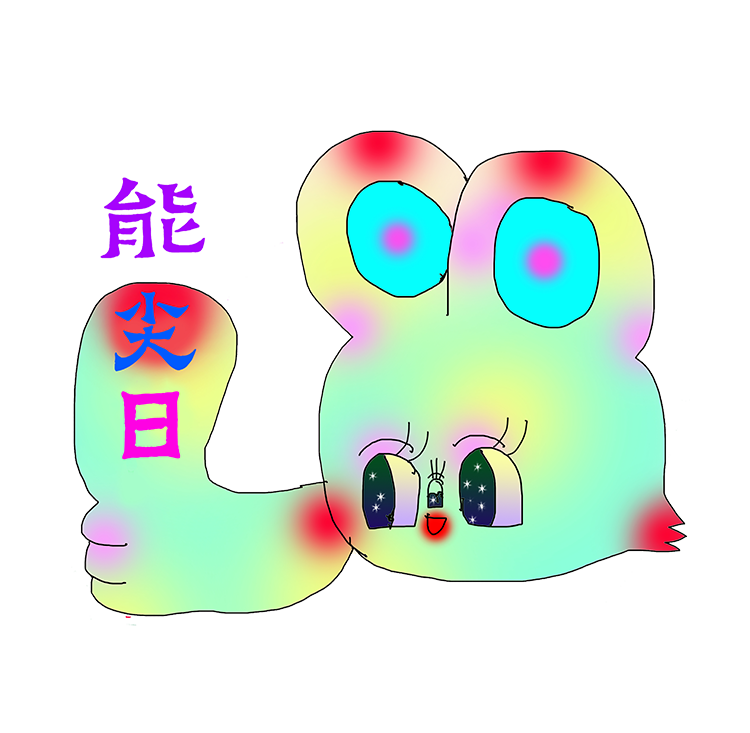Ecstasy in Peace
Created by Nhozagri
Curated by kikizhu
2024.6.22-7.21
Double Double Gallery Middle 1 st St.798 Art District,Chaoyang,Beijing

Double Double Gallery will present Nhozagri’s solo exhibition “Ecstasy in Peace” from 22nd June to 21st July 2024.
The exhibition will feature a new group of paintings and installations created by the artist in recent years. While continuing the imaginative, approachable and recognisable style for which the artist is known, the exhibition also highlights Nhozagri’s new concepts of painting, influenced by cosmology and the occult, and the further maturation of his artistic expression.
The title of this exhibition can be understood on several levels. The title of the exhibition can be understood on several levels. The first comes directly from Nhozagri’s experience of conceptualising the work “Tuning”: during a meditation, the image of a fountain naturally appeared in the artist’s mind. This further points to Nhozagri’s usual way of working: the image always emerges directly, rather than as a result of repeated conceptualisation and precise planning. As for the motivation that makes the images appear, the viewer can understand it as the imprinting of “cultural genes” on the artist’s psyche and cognitive level as a collective subconscious, or the chemical reaction of certain natural energies through spiritual experiences, which are all ways to understand Nhozagri’s creations, but not a necessary condition. necessary. Importantly, at a time when we have seen perhaps too many interpretations and justifications, Nhozagri re-enchanted art with the state of the naked child, emphasising the immediacy of the power of art to act on the physical senses without translation, and prompting us to look back to the simple source of art’s birth, namely the individual’s desire to express his or her knowledge and understanding of something that transcends the physical body.
The term “sampling”, often used to describe the way digital information is extracted, evokes notions of frequency, selection and transformation. At first glance, it may not be easy to associate these cold words with the lovely, dreamlike worlds Nhozagri creates and the marvellous creatures that live in them. But this is where her creations differ from the usual “moe culture” that prioritises visual pleasure. In fact, Nhozagri’s work is always about information and how it is processed, for example, how it is identified, filtered and translated. Just as a being in four-dimensional space cannot be seen by us in the three-dimensional world, but it can be established mathematically and can be projected in the three-dimensional world as a period of time, Nhozagri’s endeavour to present in her works is an attempt to approximate such principles. She sees herself as a recipient of inspirational information, interested in connecting the dots between what is generally perceived as irrelevant, materialising abstract ideas, and maintaining an imperceptible restraint underneath her seemingly overt style. This makes her works full of internal tension and unfettered vitality.
The main paintings in the exhibition are of comparable size, a form that stems from the artist’s intention to create a set of pictorial cards. Whether in occult rituals or games, cards serve as a medium for information, and in this exhibition, information is not a one-way flow from the works to the viewer, but rather the viewer’s identification and interpretation of the information in the images closes the loop of the flow of information.
The sampling of an out-of-the-blue image also points to a relationship between the partial and the whole, the momentary and the eternal. The fragments presented in the sampling are meant to allow the whole, which cannot be fully present, to be imagined. This exhibition intends to present a part of Nhozagri’s wonderful creative world, and invites you to “open your tentacles” and take a trip.
° 𖥧𖡆𖦥⠱ꎺ⠜° 𖥧𖡆𖦥⠱ꎺ⠜° 𖥧𖡆𖦥⠱ꎺ⠜
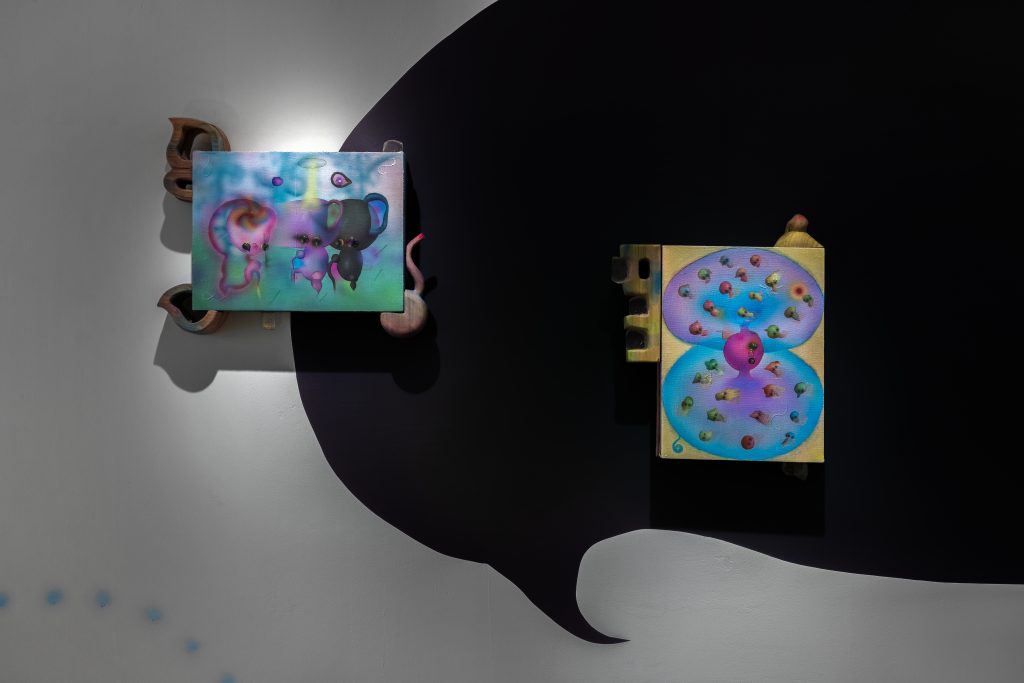

Primary Art
While prehistoric frescoes give us a glimpse into the childhood of human art, the question of the origin of creation is equally important in the individual. For Nhozagri, creation is closely linked to the way she perceives the world and to her spiritual experience, seeing herself as a recipient of inspirational information, with images always coming directly to her mind. This more intuitive way of creating, a highly recognisable personal style, and a more self-contained place in relation to the art system are all things that I find in Nhozagri that I can relate to ‘Native Art’.
Such an analogy is, of course, risky (especially in terms of shaping the artist’s image in the marketplace), as Nhozagri, who graduated from the Academy of Fine Arts, is not a “native artist” in terms of his identity, and such an analogy could be misinterpreted as questioning and undermining the intellectual content of the artist’s education, and even of his work. However, what this article is trying to emphasise here is another simple value outside of the usual art system discourse: the strong desire to express oneself only through creation, and the emotional connection that exists between the creator, the work, and the viewer. From this point of view, Nhozagri’s creative state is not only natural, but also courageous. The increased attention and discussion of mysticism in the art world and society in recent years also confirms Nhozagri’s coincidence with the trend of the times.

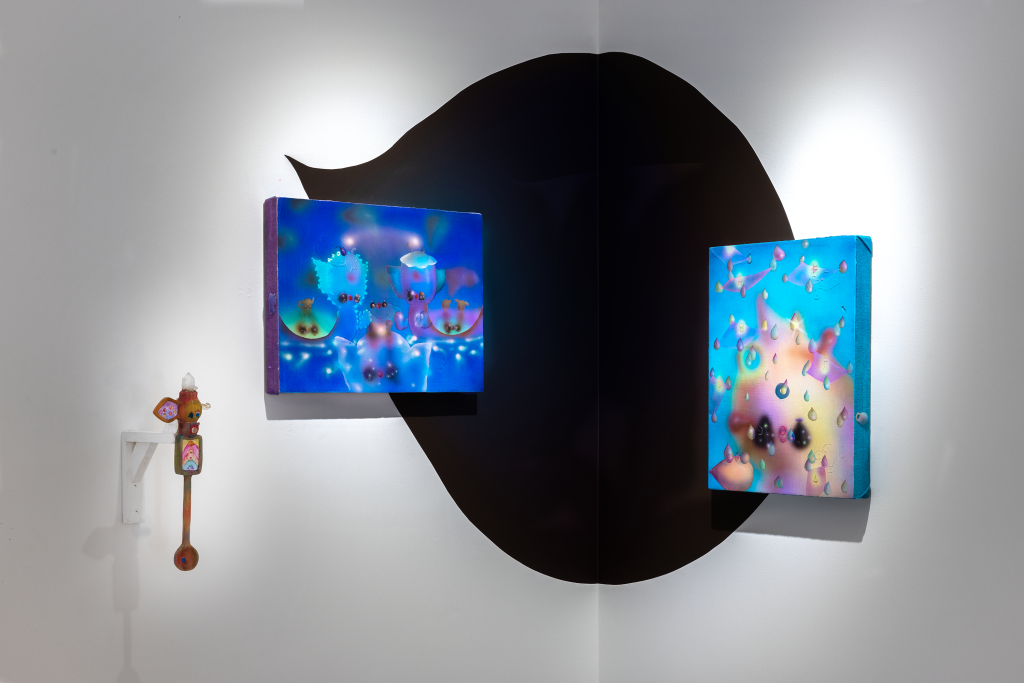
Light
Nhozagri is open to mysticism, or whether it is psychic divination or psychology or cosmology, they are all tools used by artists to understand the world. Therefore, it can be said that this exhibition is somewhat mystical, but whatever your understanding of “mystical” is, it is open to it.
In the exhibition, we use light to echo the mystery. Natural light from above defines daytime, and modern practical light settings almost always mimic daylight, and our understanding of rule and order is related to the top-down effect of daylight. In this exhibition, the dimmer interior light and a bright, low-hanging lamp attempt to create an alternative, uncommon light environment, one that evokes associations with nighttime in pre-modern civilisations: sitting around a campfire, or being present at a witchcraft site. It suggests an up-close and personal engagement, as the artist Nhozagri describes the exhibition as a “close conversation”.
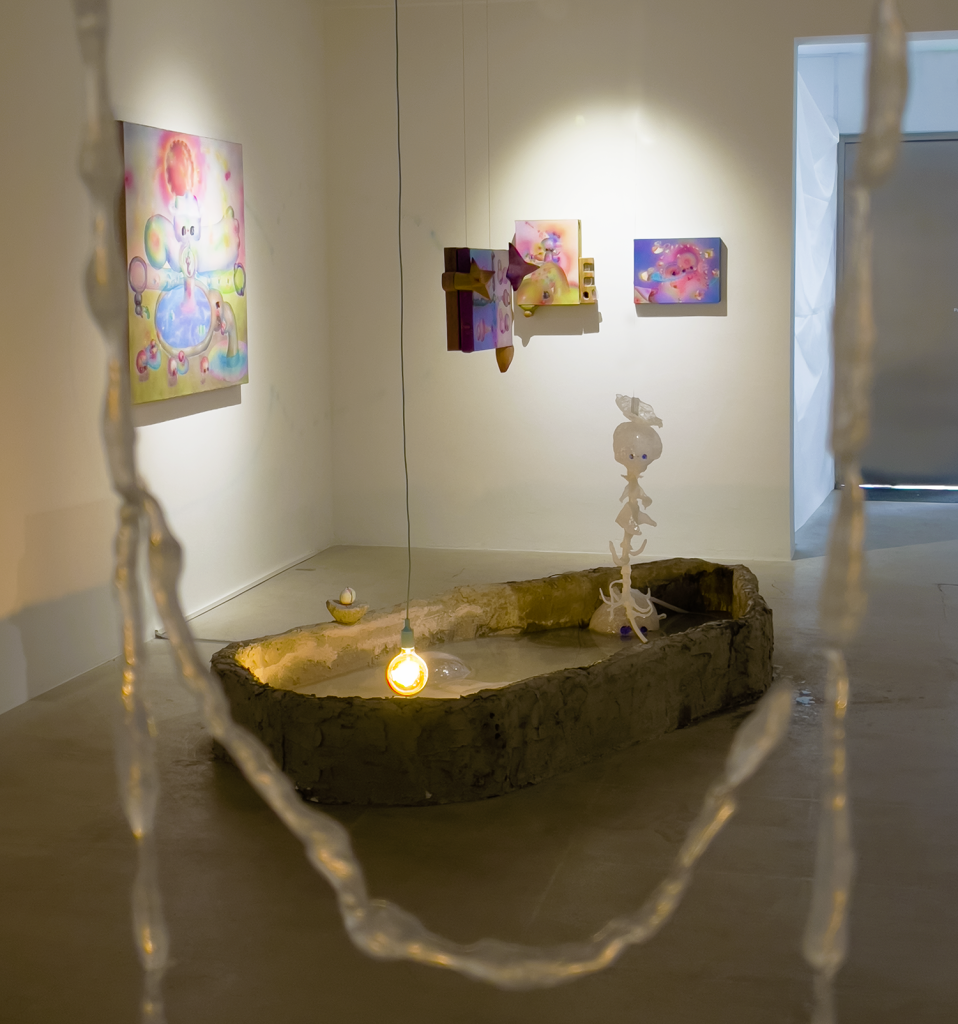


Information and Interpretation
The main paintings in this exhibition are of comparable size, a format that stems from the artist’s intention to create a set of “Oracle Cards”. As a tool for spiritual revelation, the Oracle Cards have no fixed number of cards or structure, which makes them more flexible and free for both the creator and the user of the cards. When the awareness of creating cards is integrated into the creation of the artist’s latest paintings, the content of the images is no longer just a personal, aesthetic expression of the artist, but has a very specific meaning. As a result, information no longer flows in one direction from the work and its author to the viewer; the viewer’s recognition and interpretation of the information in the picture, and the subtle effect it may have on the viewer’s psyche, have all become an important part of Nhozagri’s creative world, and one of the unique charms of his works.
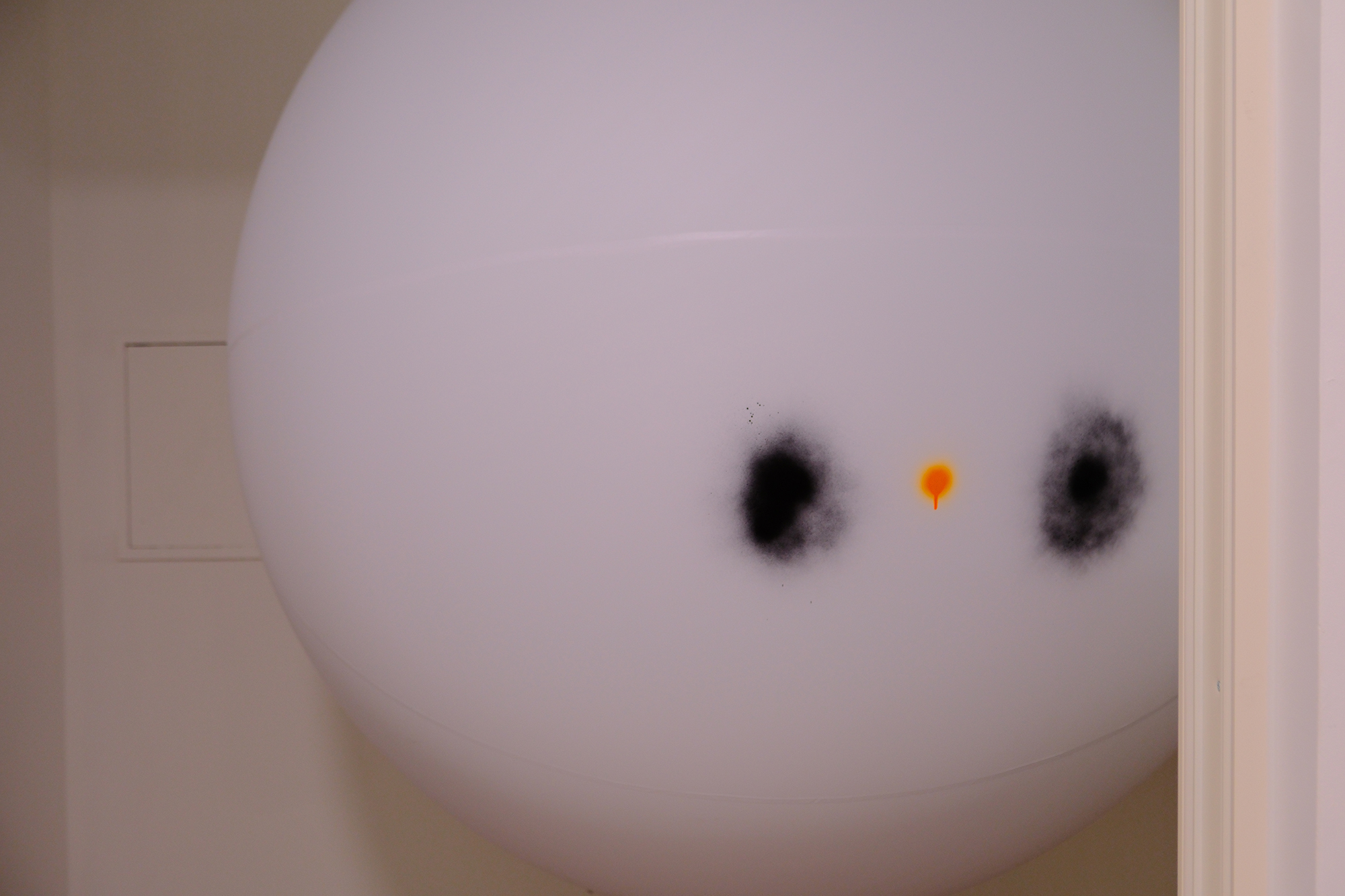
“Lovely”
“Lovely” is probably the most common comment made by many viewers of Nhozagri’s work. Although this term, which is widely used in the colloquial language, is ambiguous and usually comes from the general public rather than from professional art critics, Nhozagri never rejects such comments. However, Nhozagri never rejects such comments. Perhaps we can still understand the word cute in terms of intimacy.
Nhozagri’s work is both recognisably personal and also reveals influences from popular culture or youth subcultures, such as fairy tales featuring animals and fairies, and cartoon animations with fluorescent colours and light-emitting elements. …… These are cultural contents and aesthetics familiar to the post-80s to post-00s generations. Nhozagri calls these cultural contents and aesthetic styles familiar to the Post-80s to Post-00s generation “aesthetic genes”, and the creations generated by these aesthetic genes have responded to the desires and demands of young viewers on various psychological levels.
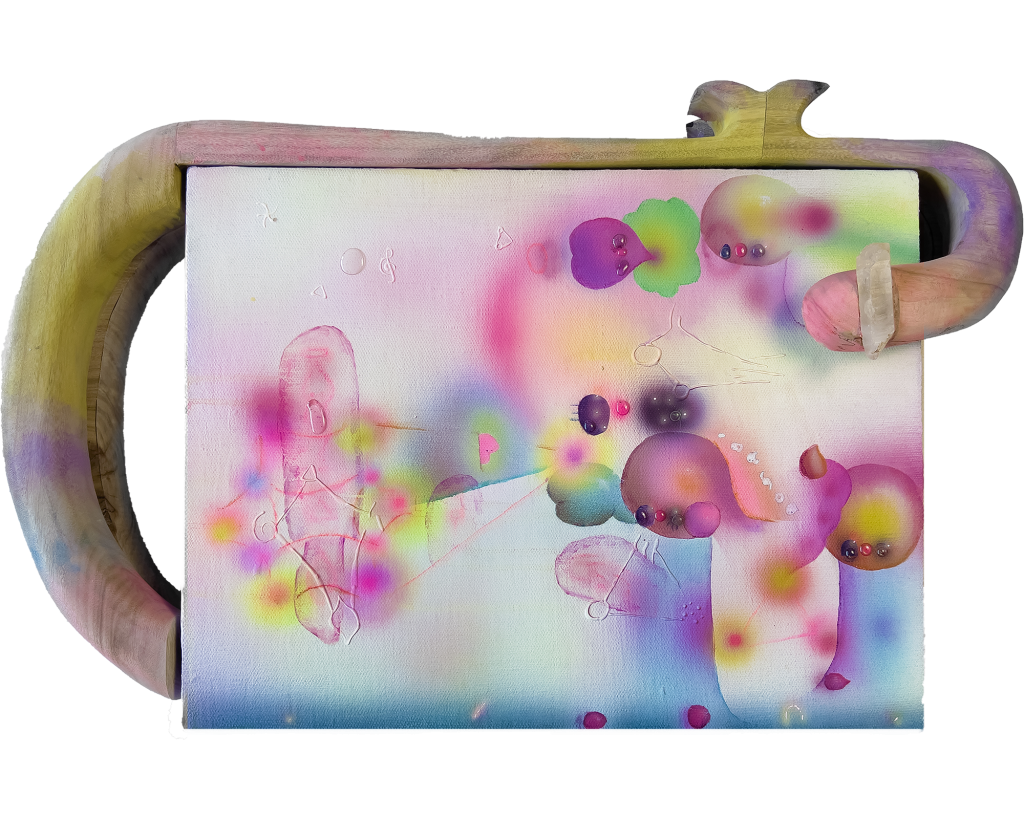
Nhozagri, Mother Star, 2024
Acrylic on canvas, resin, oil, colour powder, wood, 33 x 44cm
Membrane and Transparency
One of the works in the exhibition, Critical State Between Teacup and Doughnut, is a combination of a solid ball and a circle, and is named after an example often used in basic topological theory: the similarities and differences between the handles of a teacup and the form of a doughnut are used to explain what is meant by “homoembryo”.
In this exhibition, similar forms recur and become a sort of cross-cutting symbol. For the artist, it originates from the association of body and movement on the one hand, and on the other hand, it may be a projection of the artist’s subconscious interest in various disciplines such as topology.
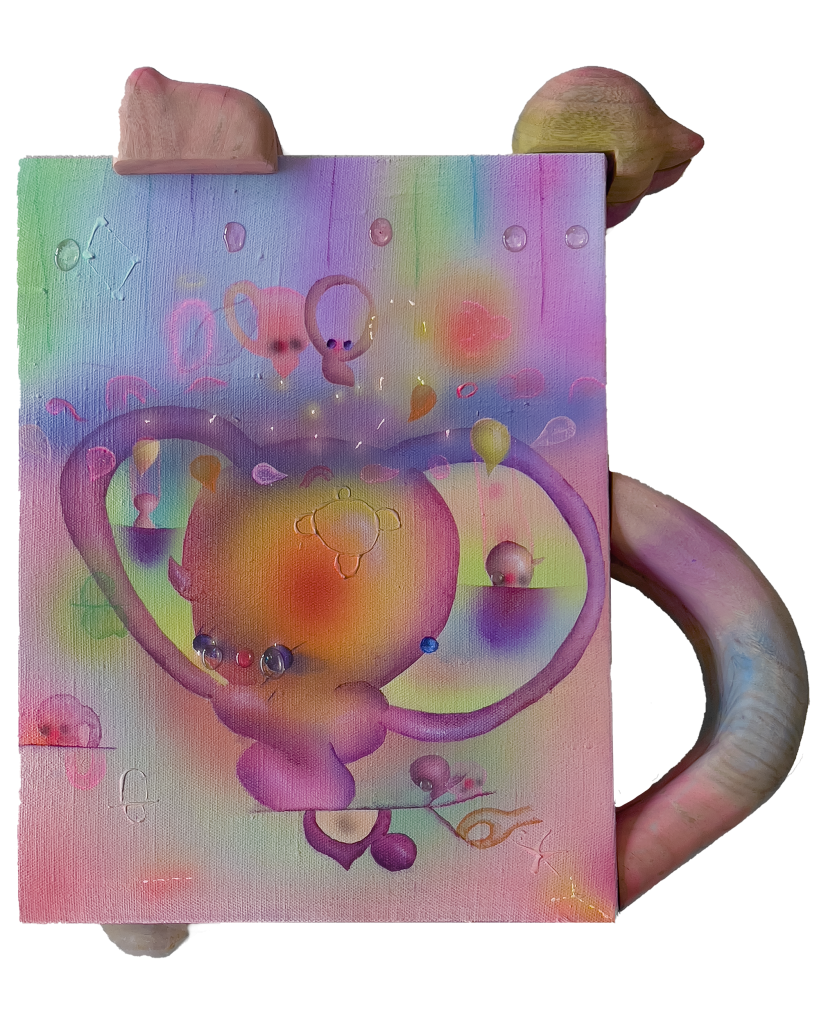
Nhozagri, The Spine is the Centre of the Universe, 2024
Acrylic on canvas, resin, oil, colour powder, wood, 33 x 44cm
Similarly, there is an interesting correlation between the translucent membranes used several times in the exhibition, resin forms that appear as organic forms, and the artist’s interest in the theory of multi-dimensional space.
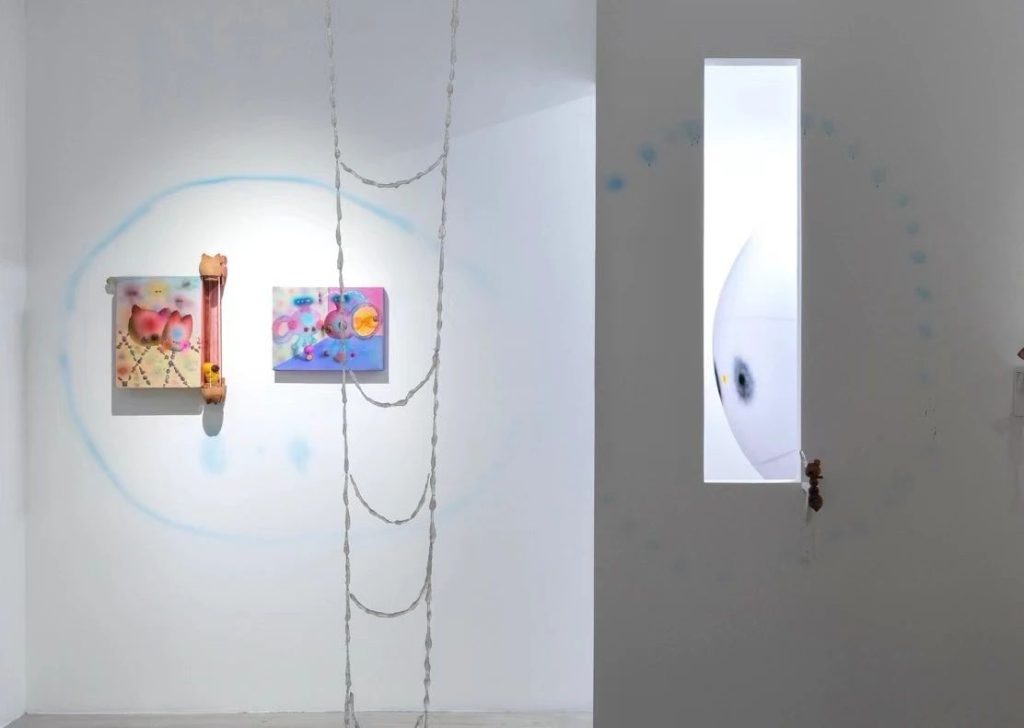
Nhozagri’s topological image spray-painted on the exhibition wall
Advent and Beyond
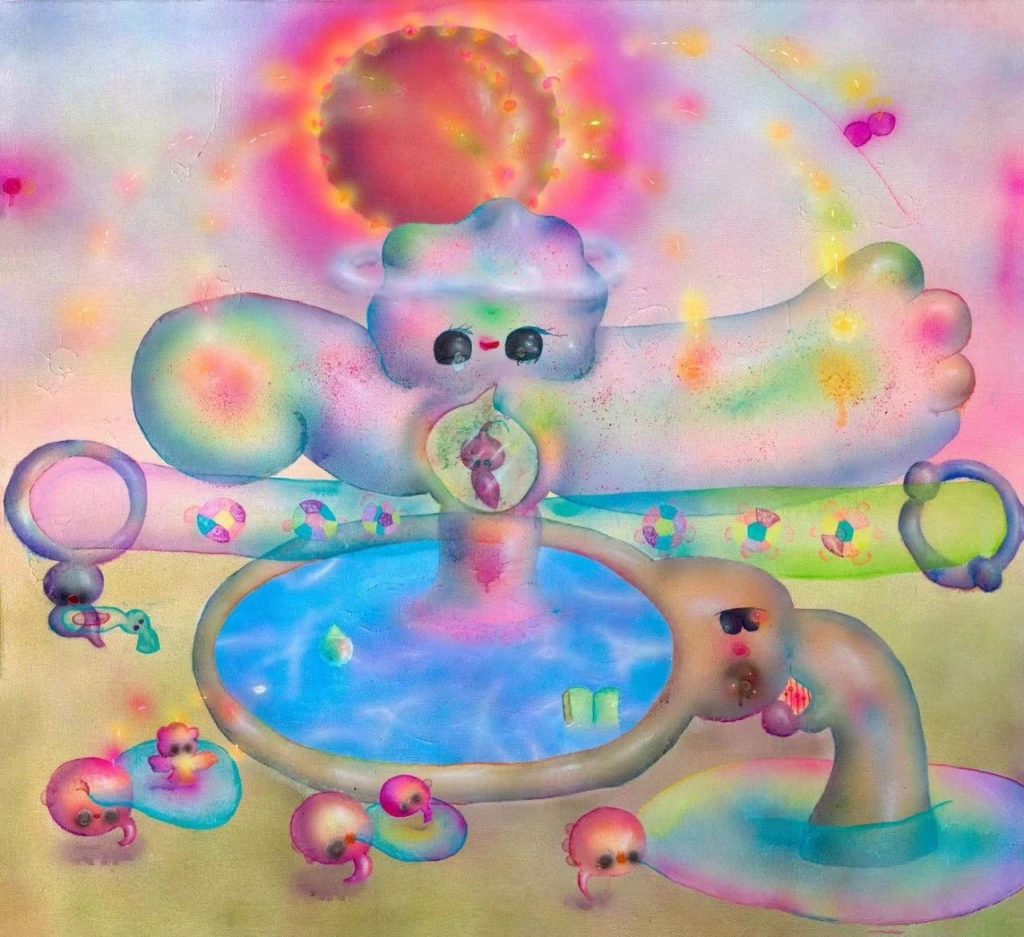
Nhozagri, Tuning, 2024
Acrylic, colour powder, resin and oil on canvas, 110 x 120cm
Fascinated by the possibility of a larger existence and concerned with the spiritual world, Nhozagri’s creations take on a strange appearance. As the artist says, she wants to create “works that seem to have come to this planet for the first time,” which I interpret as transcendence, innocence, independence, and a creative ambition that is not aggressive. Whether as an artist or as a person in life, Nhozagri presents a natural and well-balanced state of being. Her works may also inspire those who stop by to learn how to live in contemporary life.
Text / Zhu Wenqi

